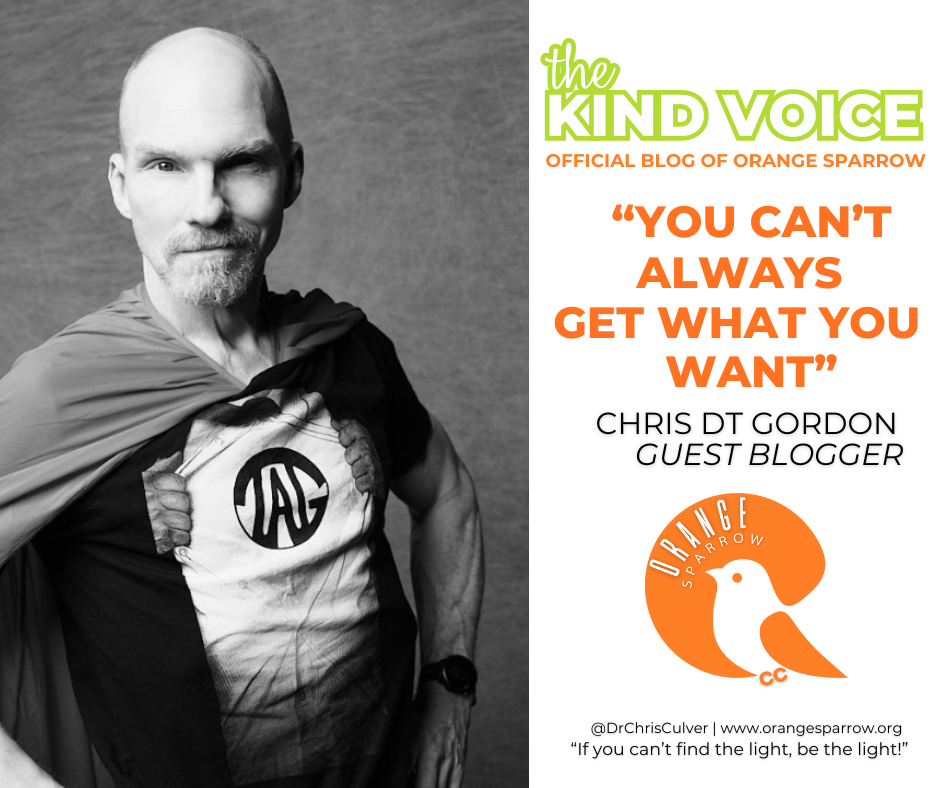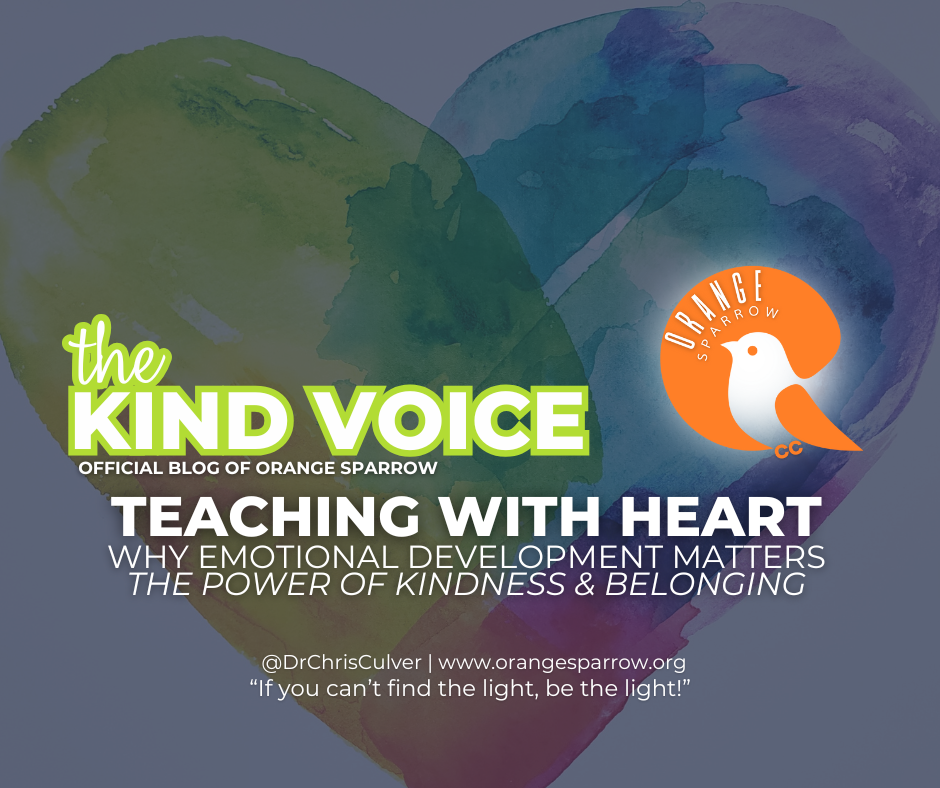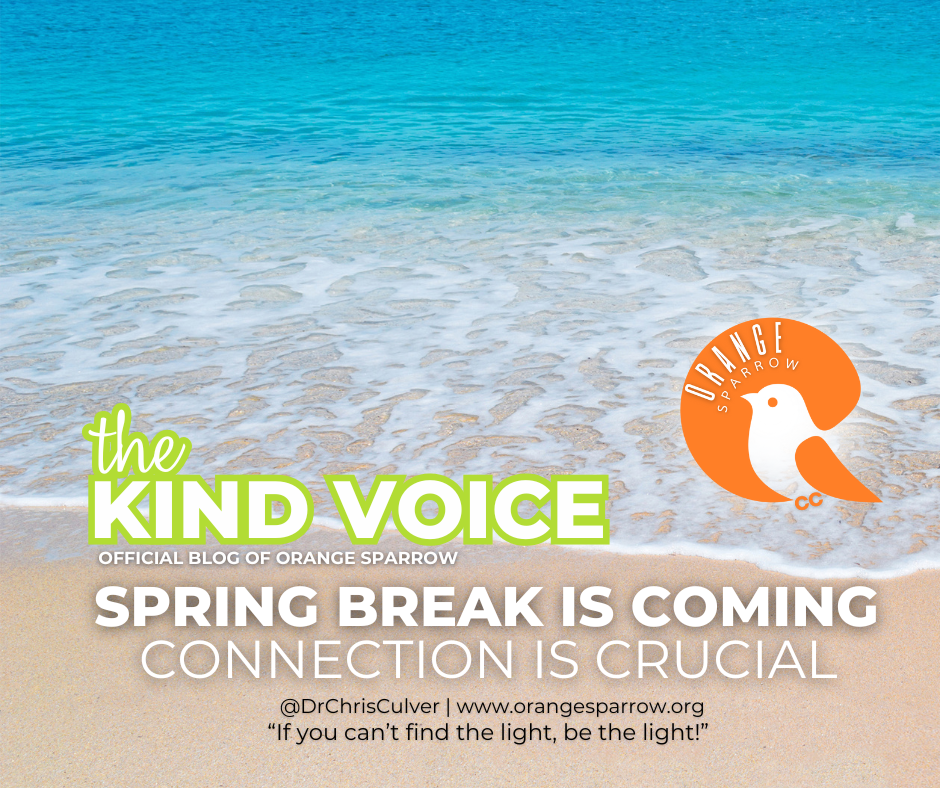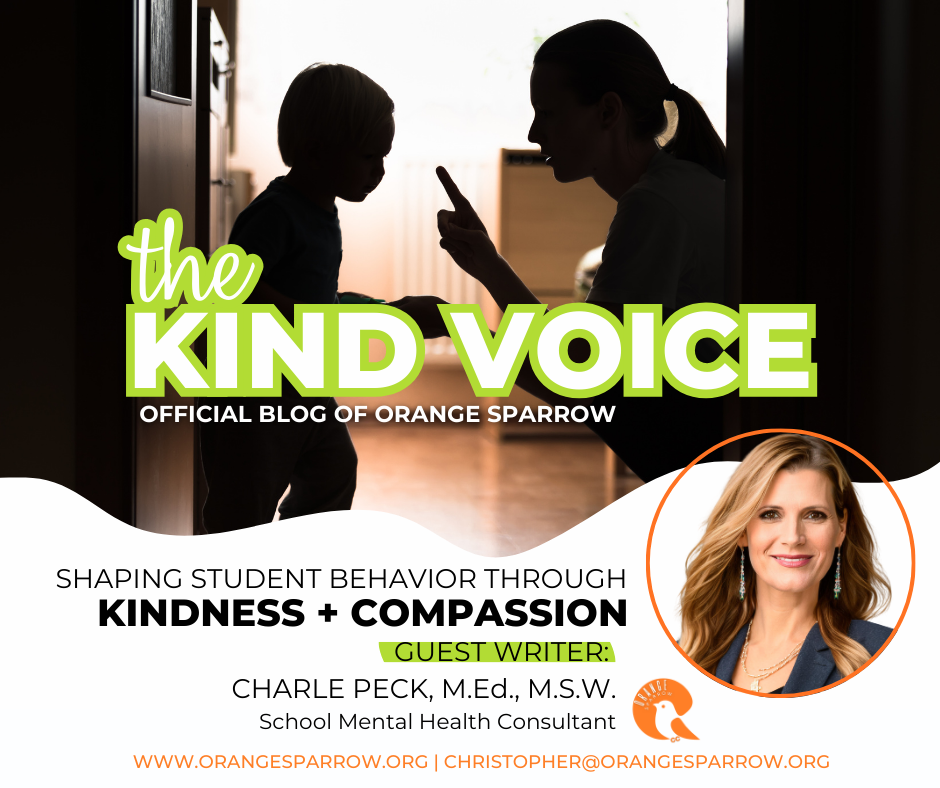
The Magic Formula: No Math Required
When we think about success, we often assume it’s the result of hard work, achievement, and reaching our goals. But what if I told you that happiness and kindness can actually be the secret ingredients for success? It sounds a little counterintuitive, right? But according to Shawn Achor in The Happiness Advantage, it’s actually happiness that fuels success, not the other way around.
I dive into the science of happiness and kindness and how we can use these simple, yet powerful tools to create environments in schools, businesses, and organizations that thrive. Let’s talk about how focusing on happiness, cultivating kindness, and shifting our mindsets can lead to better performance, stronger relationships, and a culture of success.

Gasoline, A Badge, and Sunglasses…
Gasoline, Badge, Sunglasses
What do these three things have in common? For me, they turned an ordinary travel day into a whirlwind of frustration, unexpected lessons, and a powerful reminder of how perspective can shift everything. From spilled gas and airport chaos to a bleeding thumb and a lost pair of sunglasses, this story is less about inconvenience—and more about rediscovering gratitude in the middle of the mess.
If you've ever had one of those days, this one’s for you.

The Light We Carry: The Power of Community
Education isn’t just a job—it’s a calling. As a proud product of Oklahoma’s public schools, I’ve seen the power of connection, culture, and community to transform lives. Through Oklahoma Citizens for Education, we’re working to ensure every student feels seen, every teacher is supported, and every school is empowered to thrive. This is more than advocacy—it’s about building belonging.

Moments Create Momentum: Simple things, that aren’t little things, build school culture.
School culture isn’t just about pep rallies, spirit weeks, or assemblies. Sure, those things are great, but the real foundation of a strong school culture is built in the tiny, everyday moments—the ones that often go unnoticed but leave a lasting impact. It’s the simple things, that aren’t little things, that can build or break school culture.
Think about it: A teacher greeting students by name as they walk in. A student picking up a dropped book for a classmate. A principal pausing to ask how a student’s soccer game went. A lunchroom worker sharing a smile while handing out trays. These simple things, that aren’t little things, shape the way students and staff feel about their school—whether it’s a place where they belong, where they’re valued, and where they want to be.
So, how can we be more intentional about creating a positive school culture through these simple things? Here are a few simple moments, that aren’t little moments, that build school culture. The best part? They don’t cost any money, and just a little bit of time!

“You Can’t Always Get What you Want!”
What happens when life takes an unexpected—and nearly fatal—turn? Chris DT Gordon knows firsthand. After a simple scratch led to a life-threatening battle with necrotizing fasciitis, he faced unimaginable physical and emotional challenges. But through it all, he discovered something profound: the transformative power of gratitude.
In this inspiring guest blog, Chris shares his journey from uncertainty and fear to resilience and purpose through his Attitude of Gratitude (TAG) framework. His story is a powerful reminder that while we can't always control what happens to us, we can choose how we respond.

The POSITIVE Framework: The Future of Education
Education stands at the threshold of a new era—one filled with limitless possibilities for growth, innovation, and student success. By embracing forward-thinking approaches, we can create learning environments that energize educators, engage students, and cultivate academic and personal achievement. The POSITIVE Framework is more than just a strategy; it is the key to unlocking the full potential of our schools. This transformative approach empowers educators, enriches teaching, and ensures that every student thrives. The future of education is bright, and with the right tools, we can make it extraordinary!

Why Stepping Outside Is the Best Step Forward
The change of seasons often brings with it a renewed sense of hope and energy. There’s something about stepping outside and feeling the warmth on your skin, hearing the birds chirping, and seeing new life spring up all around you. It’s a reminder that no matter how long and cold the winter may seem, there’s always the promise of brighter days ahead. Just like the seasons, our lives have their own ebbs and flows. When we embrace the natural rhythm of life, we can find comfort in knowing that tough times are temporary, and joy is always within reach.
Research supports the idea that spending time outside can significantly boost our mental health. A study published in Frontiers in Psychology found that spending just 20 minutes in a natural setting can reduce stress hormone levels (Hunter et al., 2019). Additionally, exposure to natural light is associated with improved mood and cognitive function (Berman et al., 2012).
I remember working in a school district and burning the candle at both ends. I thought that putting in more hours, achieving more accomplishments, and gaining more recognition would catapult me into the next opportunity. However, those false narratives significantly impacted my well-being. Over time, I realized the power of movement—walking, riding my bike, or simply being outside. Research supports this: walking for just 20 minutes at any pace can help reduce anxiety, tension, and even headaches (Harding, 2019).

Teaching With Heart
Emotional development in childhood is a multifaceted process that influences a child’s ability to thrive academically and socially. For today's Gen Z and Gen Alpha students, who value connection, belonging, and kindness, educational environments must adapt to meet these needs. By integrating strategies that promote emotional regulation, empathy, and a sense of community, educators can cultivate classrooms where every child feels seen, valued, and supported. Ultimately, teaching kindness and fostering belonging are not just educational strategies but essential elements of preparing children for a successful and fulfilling future.

Spring Break is Coming: Connection is Crucial
Spring break is not just a time off; it is a critical period for supporting vulnerable students. By intentionally connecting with students before the break, educators provide a buffer against the challenges that time away from school can bring. Through trust-building, consistent routines, collaborative activities, and coping strategies, schools can create a culture of belonging and kindness that extends beyond the school walls.
When students feel connected, valued, and prepared, they return to school more resilient and ready to learn. By prioritizing kindness, connection, and belonging, educators not only help mitigate the effects of trauma but also contribute to building a generation of students equipped with the emotional tools they need to succeed academically and personally.

Testing Season: More Than Just a Test
As we enter testing season, it is essential that we remember that the value of a student is not defined by a single test score. Rather, the true measure of a student’s potential lies in their ability to grow, learn, and persevere—traits that we, as educators, have the power to foster. By providing students with the encouragement, support, and belief they need to succeed, we can help them approach testing with confidence and resilience.

The Advantage in Education: How Kindness and Clarity Drive Excellence
The transformative potential of a healthy organizational culture in education cannot be overstated. By prioritizing human connection over rigid technicalities, schools have the opportunity to redefine what success looks like in a modern learning environment. As the challenges of the 21st century continue to evolve, the principles of organizational health, kindness, and belonging will serve as critical anchors that guide educational institutions through periods of change and uncertainty. The future of education depends not only on the advancement of academic knowledge but also on the cultivation of environments where every individual feels seen, heard, and valued. In this light, Lencioni’s insights offer a compelling call to action for educators everywhere—to invest in the health of their organizations as the foundation for true, lasting success.

The Ideal Team Player: Fostering Kindness, Connection, and Belonging
Schools thrive when educators and students embody humility, hunger, and smarts. These three virtues, when cultivated with kindness, connection, and belonging, create a culture where learning, leadership, and teamwork flourish. As Gen Z and Gen Alpha shape the future of education, fostering these traits becomes even more crucial to ensuring belonging, engagement, and purpose-driven learning environments.
Schools must be intentional in developing these qualities through hiring, leadership, and student engagement strategies. By prioritizing these principles, we can build schools where every educator and student feels valued, supported, and empowered to succeed.

Transforming from Good to Great Through Kindness
Jim Collins’ research confirms what we already know—schools and school districts don’t become great overnight. True transformation happens when leaders commit to long-term vision, assemble the right team, maintain focus, and stay disciplined in their efforts. However, through the lens of kindness, this transformation is not just about improving numbers—it’s about creating a school where every student and educator feels valued, empowered, and supported. Critical for today’s times despite generational differences.
Applying Good to Great principles in education means shifting from compliance-based leadership to empowered, kindness-driven leadership that fosters connection, resilience, and long-term impact. Schools that embrace these values will not only thrive but create lasting change for generations to come.

Shaping Student Behavior Through Kindness + Compassion
As educators, we set the tone. Leading with compassion and modeling kindness—through encouraging words, patience, and small gestures—creates a culture where students feel valued and safe. This is where kids behave well and truly thrive. Instead of reacting harshly to misbehavior, try a response like this: "Seems frustrating. How can I help?" This simple shift de-escalates conflicts and builds trust, especially when we get down to their level and start with genuine compassion. When we do this, we’ll show up with a warm, positive tone and non-threatening body language reflexively.

Prioritizing Connection in an Increasingly Disconnected World
Students’ social-emotional well-being is of the utmost importance. Without Maslow, students can’t Bloom. As much as this is touted at professional conferences, in articles, and in social media spaces, we tend to neglect it. We are living in a culture of fast-paced productivity and instant gratification. You can see this with the increase of straight-to-your-door services such as Door Dash, Uber Eats, Amazon, online grocery delivery services, etc. We use these services so that we can get more things done on our to-do lists. If you feel personally attacked by this, just know that I use these as well. They make life easier, right? In the workforce, we see automation and robotics creating more efficiency and higher productivity for companies, which can increase their bottom line. While these innovations are not inherently bad, they pressure us to do more. Fill our time. Sell more. Write more. Produce more. Further, they are decreasing communication and interaction with others. We are slowly losing social connection. It’s interesting to note that the advent of social media has brought digital connectivity across the globe. We can “follow” someone on Instagram who lives in Australia or watch reels of a group of athletes competing at an event in Brazil. Yet, with this increased digital connectivity, we are interacting less with people in real-time in our communities. We are increasing superficial digital connections and decreasing in-person social interaction. I see this in my work as a school counselor every day. Circling back to Maslow’s hierarchy of needs (1954), love and belonging are the third tier. We all need this connection. Our students need this connection - both with adults and with peers.

Beyond Discipline: The Power of Compassion
Traditional discipline models often focus on punishment, but research shows that compassion fosters trust, resilience, and academic success. Schools that prioritize empathy, restorative practices, and belonging create environments where students feel valued and empowered. This approach doesn’t mean lowering expectations—it means ensuring students have the support they need to thrive. Discover how shifting from punitive discipline to compassionate leadership can transform school culture, reduce behavioral issues, and improve student outcomes. Explore practical strategies that build connection, accountability, and a strong foundation for learning.

Why Students Need Collaboration in the Classroom
In today’s classroom, collaboration is more than just a buzzword—it’s a vital skill that today’s students need to thrive. As childhood has shifted from play-based to screen-driven, students miss out on the social and cognitive development that traditional play once provided. This research article explores how incorporating collaborative group work into the classroom helps students develop essential life skills like problem-solving, decision-making, and conflict resolution. Learn how to turn your classroom into a space where teamwork isn’t just encouraged—it’s essential.

From Cruelty to Compassion: How #CTKindness Transformed a School and Sparked a Movement
March 2016. I was a first-year assistant principal, running on fumes and sheer willpower. My days were filled with student crises, teacher support, and endless supervision duties. As if that weren’t enough, I had somehow been talked into coaching the school’s dance team. Exhaustion was my reality, and a rare night off felt like gold.
That night, just as I let myself breathe, a text from a senior student shattered my moment of peace.

More Than Just Teaching
Great teachers possess many attributes, but the best adjectives are timeless and memorable. Depending on what each student needed at the time in their life, some may say demanding, caring, engaging, or fun, but those simply lead to the end result of being unforgettable. In the end, they are the person that you needed at that specific time in your life, the person you could count on when you yearned for attention in some way, perhaps in a form you didn’t know you even needed at that moment. They are a counselor, mentor, fist bump, handshake, side hug, high five, stern talk, shoulder to cry on, safe person to vent to, and a myriad of other needs, which is why it is more than just teaching to kids.
When I look back at the hundreds of students that I have encountered in my career, many stick out, but some play a larger part of my legacy as an educator. There are students like Chris, who tested me daily, or Jamaica who could bring the focus of the class to a halt with a laugh that was infectious, or a student named Elijah who just needed someone to be there and believe in him. But the one that will always stick with me is Karen.

Leading FOR the Heart: The Purposeful Approach to Leadership
Leading with heart wasn’t something I initially struggled with—it was the overwhelming stress of leadership that caused me to lose sight of it. At first, I approached leadership the same way I had always approached teaching: with a heart for making an impact. I loved working with students, teaching and inspiring them, and watching them succeed.
But as the demands of leadership mounted, my focus shifted. The daily pressures—constant meetings, operational challenges, and dealing with difficult situations—took precedence over the relationships I had once prioritized. I felt like I was being pulled in a hundred directions, and the mission of the school became my primary focus. I started to see my role as being the one responsible for moving the mission forward, regardless of the personal connections along the way.
One of the toughest lessons I had to learn was that you can’t accomplish a mission without investing in people. And it wasn’t just about making sure teachers were doing their jobs—it was about truly supporting and developing them, partnering with parents, and building a community that felt connected to the vision of the school.
